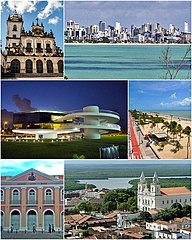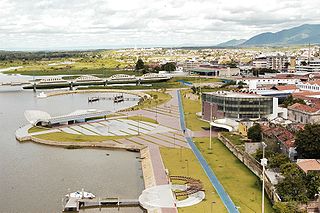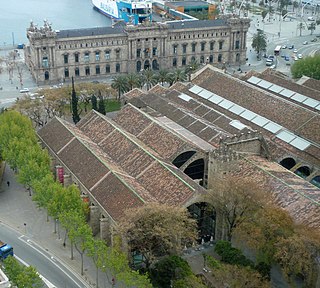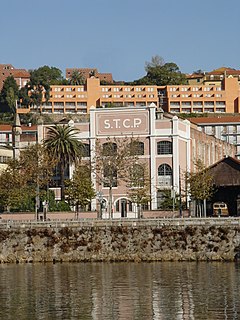Creative Commons (CC) is an American non-profit organization and international network devoted to educational access and expanding the range of creative works available for others to build upon legally and to share. The organization has released several copyright-licenses, known as Creative Commons licenses, free of charge to the public. These licenses allow authors of creative works to communicate which rights they reserve and which rights they waive for the benefit of recipients or other creators. An easy-to-understand one-page explanation of rights, with associated visual symbols, explains the specifics of each Creative Commons license. Creative Commons licenses do not replace copyright, but are based upon it. They replace individual negotiations for specific rights between copyright owner (licensor) and licensee, which are necessary under an "all rights reserved" copyright management, with a "some rights reserved" management employing standardized licenses for re-use cases where no commercial compensation is sought by the copyright owner.

Funchal is the largest city, the municipal seat and the capital of Portugal's Autonomous Region of Madeira, bordered by the Atlantic Ocean. The city has a population of 111,892, making it the sixth largest city in Portugal, and has been the capital of Madeira for more than five centuries. Because of its high cultural and historical value, Funchal is one of Portugal's main tourist attractions. It is also popular as a destination for New Year's Eve, and it is the leading Portuguese port on cruise liner dockings.

João Pessoa is a port city in northeastern Brazil, and is the capital of the state of Paraíba. It is the state's largest city, with an estimated population of 800,323 of inhabitants (2018). It is located on the right bank of the Paraiba do Norte river.

Ouro Preto, formerly Vila Rica, is a city in and former capital of the state of Minas Gerais, Brazil, a former colonial mining town located in the Serra do Espinhaço mountains and designated a World Heritage site by UNESCO because of its outstanding Baroque Portuguese colonial architecture.

Curitiba is the capital and largest city in the Brazilian state of Paraná. The city's population was 1,879,355 as of 2015, making it the eighth most populous city in Brazil and the largest in Brazil's South Region. The Curitiba Metropolitan area comprises 26 municipalities with a total population of over 3.2 million, making it the seventh most populous metropolitan area in the country.

Flickr is an American image hosting and video hosting service, as well as an online community. It was created by Ludicorp in 2004 and is a popular way for amateur and professional photographers to host high-resolution photos. It has changed ownership several times and has been owned by SmugMug since April 20, 2018.

The National Museum of Brazil is Brazil's oldest scientific institution. It is located in the city of Rio de Janeiro, where it is installed in the Paço de São Cristóvão, which is inside the Quinta da Boa Vista. The main building was originally the residence of the Portuguese Royal Family between 1808 and 1821 and was later used to house the Brazilian Imperial Family between 1822 and 1889. After the monarchy was deposed, it hosted the Republican Constituent Assembly from 1889 to 1891 before being assigned to the use of the museum in 1892. The building was listed as Brazilian National Heritage in 1938 and was largely destroyed by a fire in 2018.

Sobral is a municipality in the state of Ceará, Brazil.

The Museu Nacional d'Art de Catalunya, abbreviated as MNAC, is the national museum of Catalan visual art located in Barcelona, Catalonia, Spain. Situated on Montjuïc hill at the end of Avinguda de la Reina Maria Cristina, near Pl Espanya, the museum is especially notable for its outstanding collection of romanesque church paintings, and for Catalan art and design from the late 19th and early 20th centuries, including modernisme and noucentisme. The museum is housed in the Palau Nacional, a huge, Italian-style building dating to 1929. The Palau Nacional, which has housed the Museu d'Art de Catalunya since 1934, was declared a national museum in 1990 under the Museums Law passed by the Catalan Government. That same year, a thorough renovation process was launched to refurbish the site, based on plans drawn up by the architects Gae Aulenti and Enric Steegmann, who were later joined in the undertaking by Josep Benedito. The Oval Hall was reopened in 1992 on the occasion of the Olympic Games, and the various collections were installed and opened over the period from 1995 to 2004. The Museu Nacional d'Art de Catalunya was officially inaugurated on 16 December 2004. It is one of the largest museums in Spain.

The Museu Picasso, located in Barcelona, Catalonia, Spain, houses one of the most extensive collections of artworks by the 20th-century Spanish artist Pablo Picasso. With 4,251 works exhibited by the painter, the museum has one of the most complete permanent collections of works. The museum is housed in five adjoining medieval palaces in Barcelona's La Ribera neighborhood, in the Old City, and more specifically, it is located on Montcada Street, a formerly very prestigious street home to wealthy merchants and nobility from the Gothic to the Baroque periods. It opened to the public on 9 March 1963, becoming the first museum dedicated to Picasso's work and the only one created during the artist's lifetime. It has since been declared a museum of national interest by the Government of Catalonia.

The Synagogue of Tomar is a well-preserved medieval synagogue in Tomar, Portugal. Along with the Synagogue of Castelo de Vide, it is one of two existing pre-expulsion synagogues in the country. It is located at 73 Rua Dr. Joaquim Jaquinto in Tomar's historic city center. Built in the mid-1400s, the building was active as a synagogue only until 1496, when Jews were expelled from Portugal. It now houses the Abraham Zacuto Portuguese Jewish Museum.

The National Historical Museum of Brazil, was created in 1922, and possesses over 287,000 items, including the largest numismatic collection of Latin America. The architectural complex that houses the museum was built in 1603 as the St. James of Mercy Fort; earlier structures date back to 1567, erected by order of King Sebastian I of Portugal. In 1693, the Calaboose Prison, for slaves, was built. In 1762, the Casa do Trem was added as a depot of weapons and ammunition. The last additions are the War Arsenal (1764) and the Barracks (1835).

The Museum of Transport, Greater Manchester aims to preserve and promote the public transport heritage of Greater Manchester in North West England, it is in the Cheetham Hill area of Manchester.

The Museu Nacional do Azulejo, occasionally known in English as the National Tile Museum, is an art museum in Lisbon, Portugal dedicated to the azulejo, traditional tilework of Portugal and the former Portuguese Empire, as well as of other Iberophone cultures. Housed in the former Madre de Deus Convent, the museum's collection is one of the largest of ceramics in the world.

The Maritime Museum of Barcelona is located in the building of Drassanes Reials de Barcelona, the royal arsenal of Barcelona, dedicated to shipbuilding between the thirteenth century and eighteenth century. The first mention of these arsenals date from 1243 in a document indicating the boundaries of the city of Barcelona where it mentions its shipyard.

The Museu CR7 is a museum that is dedicated to Cristiano Ronaldo's trophies. It is located in Funchal, Madeira.

The Immigration Museum of the State of São Paulo is a museum of immigration in the Mooca neighbourhood in east São Paulo, Brazil. It is located in the Immigrant Inn building, which opened in 1887.

The Immigrant Inn is a building in São Paulo. Construction started in 1886, and opened in 1887, with the first group of immigrants arriving on 5 June 1887, before construction was completed in 1888. It was the main place for new immigrants to stay when arriving in the state of São Paulo at a time when coffee production in Brazil was being expanded and slavery in Brazil had been abolished. During the 19th and 20th century, people from over 70 nationalities arrived in Brazil, and over 2.5 million passed through the hostel.

The Porto Tram Museum(Museu do Carro Eléctrico) is a museum operated by the Sociedade de Transportes Colectivos do Porto. It was inaugurated in 1992 and is installed in a former thermoelectric power station next to the River Douro in Massarelos, Porto, Portugal. It exhibits material related to the history of trams in Porto. The collection contains 16 electric cars, 5 trailers, and two maintenance vehicles as well as the former equipment of the power plant, which provided electricity for the tram lines.

The Ceramics Museum of Sacavém is situated in the town of Sacavém in the municipality of Loures, just northeast of Lisbon in Portugal. The museum was opened in July 2000 and was constructed on the grounds of a former ceramics factory. Most of the exhibits reflect the output of that factory and its documentation centre is devoted to the study of the history and production of the factory and the industrial heritage of the municipality. In 2002 the museum was awarded the Luigi Micheletti Prize in the Industrial Heritage category.





















